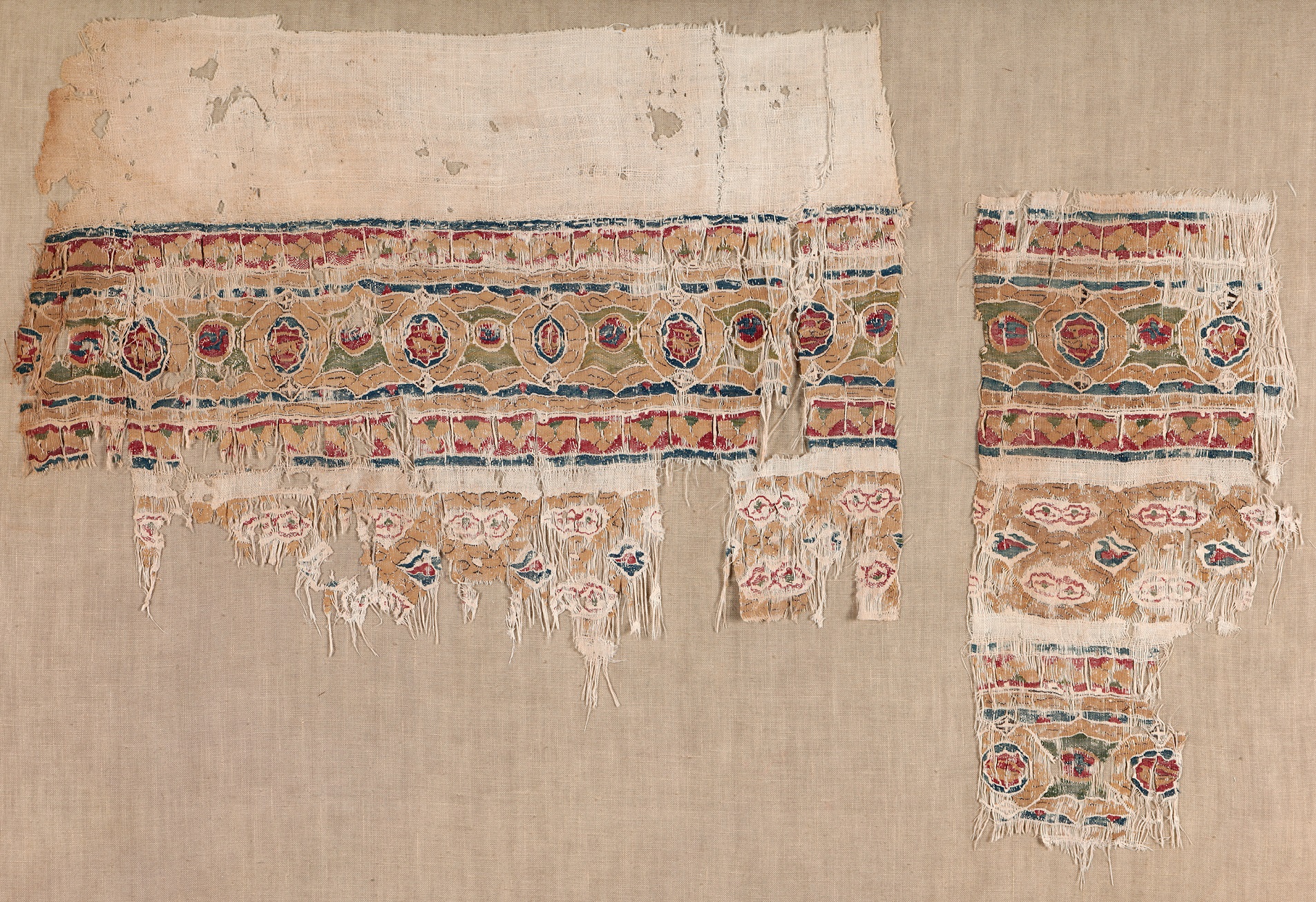These three parts come from the same ceremonial fabric. All have the same cloisonné-like pattern outlined in brown thread, with ‘golden’ beige colour dominant, brightened up with red and green bands striped with blue. The design alternates small medallions on a green band with interlacing shades and reserved spots in natural linen. Some motifs (hares) are easily identifiable, others less so (blue winged creatures? red and green flowers?).
Origin:
Egypt
Date:
10th - 12th century
Material:
Linen and silk
Dimensions:
1) Warp: 24 cm, weft: 30.5 cm;
2) Warp: 24 cm, weft: 11 cm
Comparisons:
Coll. J-F Bouvier, inv. I 104.
Rietberg Museum, Zurich, inv. RAg 585.
Biblioteca Apostolica Vaticana, inv. 7010.
Provenance:
Collection Coptic textiles Fill-Trevisiol: donation
Location:
Musée royal de Mariemont
Inwoven silk tapestry in very fine linen cloth
I. Ground weave
(1) Ground weave (sewn-on part)
(2) Ground weave between silk bands
Warp:
(1) natural-coloured linen Z: 20/cm
(2) coloured linen S: 30/cm
Weft:
(1) natural-coloured linen Z: 24/cm
(2) natural-coloured linen S: 28/cm
Weave:
(1-2) tabby
II. Tapestry areas
Warp:
(2) linen S
Weft:
(2) red, green, blue, beige silk: 22-42/cm; brown silk for details; natural-coloured linen, paired, S for outlining the figures
Weave:
(2) extended tabby: alternately 2/2 and 1/1
Ribs per cm:
(2) 20
Special techniques:
slit tapestry, eccentric weft; the outlining of the figures in linen: woven lazy lines

